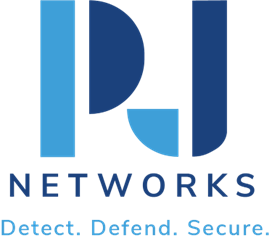Fortinet Firewalls for Manufacturing: Protecting OT Networks
In today’s world, ensuring manufacturing security is more critical than ever. With the rise of connected devices and the Industrial Internet of Things (IIoT), the lines between IT and OT have blurred. Choosing the right strategy for protecting your operational technology (OT) networks is vital. Today, we’ll explore how Fortinet Firewalls can help secure OT in factories and plants. From segmentation strategies to protocol-specific rules, I’ve got you covered. Let’s dive into the nitty-gritty of manufacturing security!
OT vs. IT Security
Let’s start by understanding the difference between OT and IT security. They sound similar, but they serve distinct purposes.
- IT Security: Focuses on protecting data and ensuring integrity within the corporate world. It’s about emails, websites, and protecting sensitive information like customer data.
- OT Security: Centers on the physical processes and equipment within factories. Think about machinery, production lines, and the systems that control them.
Both are crucial, but OT security requires an approach deeply embedded in the machinery and industrial protocols. That’s where Fortinet Firewalls come into play.
Segmentation Strategies
One size doesn’t fit all. We need a tailored approach when it comes to OT segmentation. Let’s break it down:
- Network Segmentation: Divide your OT network into smaller segments or zones. This limits potential damage if a breach occurs. Use Fortinet Firewalls to create barriers between network segments.
- Micro-segmentation: Take it a step further by segmenting even within those segments. Isolate specific devices for added security.
- Virtual LANs (VLANs): Implement VLANs to separate different parts of the OT infrastructure. It’s like sectioning off rooms in a building rather than locking down the whole place.
This layered approach helps us catch threats early and contain them effectively before they disrupt operations.
Protocol-Specific Rules
Focusing on protocol-specific rules is key in OT environments. Using Fortinet Firewalls, you can create rules tailored to the specific protocols your systems operate on:
- Understand Protocols: Know what protocols your OT systems use. Are they using Modbus, DNP3, or EtherNet/IP? Identify them.
- Create Specific Rules: Develop firewall rules specific to these protocols. Ensure you only allow legitimate data traffic and block anything suspicious.
- Regular Monitoring: Constantly monitor these protocols. Set alerts for unusual behaviors or unauthorized usage attempts.
Setting protocol-specific rules ensures your network is smartly designed to prevent unauthorized access or disruptions.
Safety & Compliance
Security is not only about stopping cyber threats. In factories and plants, maintaining safety and compliance is equally important.
- Ensure Safety Protocols: Your firewall should be configured to keep essential safety protocols intact. This means no interference with machinery operations.
- Compliance Requirements: Many industries have specific compliance requirements. Make sure that your Fortinet Firewall settings align with standards like NIST or ISO/IEC.
- Regular Audits: Conduct regular security audits to ensure compliance and the effectiveness of your security measures.
Ensuring safety and compliance means you’re not just protecting systems but also the people and processes that rely on them.
Wrapping it up, securing OT networks requires a thoughtful mix of strategies. From understanding the unique nature of OT vs. IT security to implementing robust segmentation strategies, protocol-specific rules, and ensuring safety and compliance, we pull out all the stops for P J Networks. By leveraging Fortinet Firewalls, we can keep your manufacturing operations secure and running smoothly. In the ever-evolving landscape of cybersecurity, staying proactive is your best defense. Remember, manufacturing security is a journey, not a destination.
